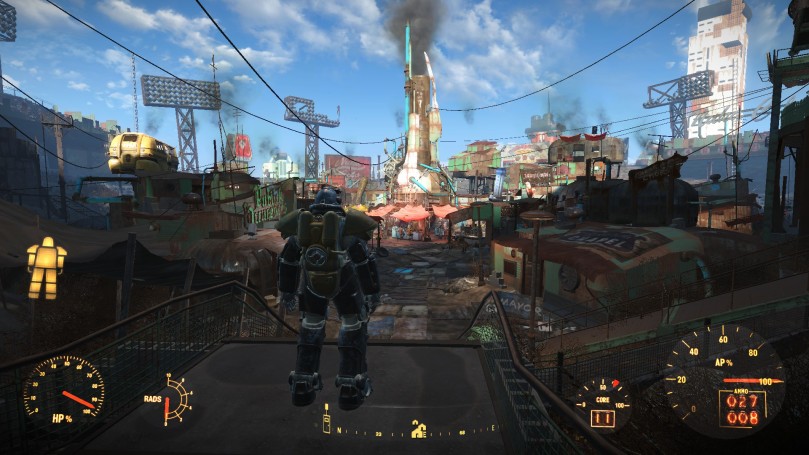Introduction
The Creature From Jekyll Island is written by G. Edward Griffin. The book goes into great detail about the creation and reasoning behind Jekyll Island. For each chapter, I will give a summary of what said chapter teaches.
Chapter 1
The chapter begins with Nelson W. Aldrich entering a train traveling to Jekyll Island. The island that bore the system we know today, as the Federal Reserve. A few years after the meeting took place, the first leak of it was written in 1916 by B.C. Forbes. Years later, Paul Warburg wrote a book in 1930 named “The Federal Reserve System, It’s Origin and Growth.” The book’s intent was to describe it’s true origin but the “Results of the meeting are confidential.”
Chapter 2
This chapter talks about the game of bailout. The rules of the game begin when the federal reserve allows commercial banks to create money out of thin air. Banks get profit from this easy money by lending it to others and collecting interest. The concept of “The Debt Roll-Over Pay” is covered as well. A roll-over happens when a borrower finally cannot pay the loan.
Chapter 3
In 1970 when Penn Central railroad became bankrupt. After Congress heard that the company’s collapse would bring public attention, they gave a $125 million dollar loan. In the same year, Lockheed faced bankruptcy. Thousands would be out of a job and subcontractors would go out of business. So Congress granted a new $250 million dollar loan. To this day, Congress hands out loans albeit in much larger amounts.
Chapter 4
Ever since the great depression in the 1930’s, Americans became impressed with the theories of socialism. The concept that the it is proper for the government to financially care for their citizens appealed to the people.
Chapter 5
In 1944, a meeting between financiers and politicians took place in Bretton Woods, New Hampshire. The result of the meeting were two companies. The IMF, and The World Bank. Their goals are to facilitate international trade and to stabilize exchange rates. However, their true goal was to eliminate the gold exchange standard. The IMF would act as a central bank and print money out of thin air.
Chapter 6
After managing to enslave the U.S. financially, the IMF spread to other countries. Creating a “New World Order.” The IMF/World Bank preached to the rest of the world under the pretense of “Saving the world from poverty.” This is basically the game of bailout. On an international level.
Chapter 7
In order to understand the federal reserve, you need to understand the nature of money. There four kinds of money: Fiat, receipt, fiat, and commodity. Metals such as silver and gold have shown to be the only reliable base of a stable currency. People have been fooled for centuries under the pretense that more money is better. And that printing more money than there is to back it is good. There have only been a few periods in human history where men did not defile currency.
Chapter 8
Fiat money at its core is paper money without gold or silver to back it. With its introduction into colonial America, it caused inflation, unemployment, and political distress. The bank of England eventually forced the colonies to abandon fiat money. Allowing a period of prosperity. Being the first major use of fiat money, it was the start of many.
Chapter 9
The original intent of a bank was to protect and exchange people’s coins. The first banks also introduced a paper note to replace traditional currency. These notes became used so frequently it became currency. With said note still being worth something. Inevitably, the banks became greedy started to counterfeit.
Chapter 10
The American dollar has no value. While it’s made entirely out of nothing, that isn’t quite true. It’s more accurate to say it’s based on debt. The Mandrake Mechanism is the system that allows money to be created out of debt. The true purpose of the mechanism is to artificially expand the money supply. Creating inflation.
Chapter 11
While the federal reserve has manipulated the world’s economy for years, there is one family that has manipulated governments and leaders for centuries. They are The Rothschild’s. The Rothschild’s are a German family of fractional-reserve bankers who have funded many leaders and stayed in the shadows. Their first claim to fame was during the Battle of Waterloo when they secretly supplied the Duke of Wellington with gold. And by the end of the war, the Rothschilds already knew the winner of the war.
Chapter 12
While most would attribute the beginning of World War I with the assassination of Arch-Duke Franz Ferdinand, the actual cause was the sinking of a ship called the Lusitania. Considering the size of the war, Britain and France needed serious funding. And who funded them? The House of Morgan. Morgan made a profit from bonds but when Germany began controlling the Atlantic with U-Boats supply lines became choked. And if no bonds from Morgan were bought they would suffer. But in order to fix this conundrum they needed government help. But seeing how America still wasn’t in the war, the government couldn’t help by law. This is where the Lusitania comes in. The morgan could get the Lusitania to get destroyed America would join the war, and they would once again profit.
Chapter 13
While The Bolshevik Revolution may appear as just the Russian people being treated poorly by the elite, it was a planned and well-funded event. Cecil Rhodes founded a secret society in England which would evolve into The Round Table. An organization of central bankers with the goal of complete control of the economy.
Chapter 14
During The Bolshevik Revolution, Round Table spies from the U.S. masqueraded as Red Cross and supported the Russians. Over the years, the U.S. has helped developed Russia and eastern Europe creating power and profit.
Chapter 15
With the total cost of the Revolutionary War being $227 million dollars, the introduction of fiat money did not end well. The U.S. needed a stable monetary unit. Thomas Jefferson proposed using Spain’s unit. By creating a dollar that contains at least 371 grains of silver. The founding fathers unanimously agreed with this system. But while the Constitution prohibits the federal government from issuing fiat money, it hasn’t stopped them in recent years.
Chapter 16
Before the creation of the federal reserve, there was The Bank of North America. An equally evil establishment. It was the first bank to begin the trend of inflating its bank notes. Fortunately, citizens wisened up and ditched the notes. Until The First Bank of The United States was born. And it was just as fraudulent. Being created by Congress, the Bank’s intent was to fund the government through mass printing. Leading to inflation.
Chapter 17
The end of the War of 1812 left America in a financial frenzy. Instead of the banks withering away and the free market taking over, Congress protected banks and continued the trend of rampant fraud. Thus, the nation’s third bank, The Second Bank of America, was created. After Andrew Jackson’s election in 1828, his first motive was to eliminate the banks and a rival named Nicholas Biddle. In the end, Jackson succeeded by removing federal deposits and making them private.
Chapter 18
While the banks of the U.S. died the practice of banking was very much still alive. Instead of banks being corporations, the became private businesses. While the goal of abolishing slavery was all well and good, it was not the true reason for the beginning of the civil war. The North and South once had a stable trading relationship. Until the South began a similar relationship with Europe. The North hated that they were missing out on market share. So the politicians passed a legislation in which the South was forced to purchase goods at a higher price. Europe retaliated by boycotting American purchases. In short, this is legal plunder.
Chapter 19
In most history books, The Civil War was a fight against slavery, when in reality it was the result of political and financial reasons. Abraham Lincoln is often painted in a good image when in fact he was the cause 1,000 civilian deaths when he forced cities in conscription. And the “Emancipation Proclamation” was only a deterrence to prevent England and France from interfering. Tsar Alexander II was also assisted Lincoln by sending his fleets as blockades.
Chapter 20
The end of The Civil War brought America an economic boom and bust. This was the result of fiat money from firms which were basically central banks. Among these firms was the House of Morgan. And from the Morgan’s, cane Benjamin Strong. Strong was a governor for the Federal Bank of New York. He assisted the British and saved their economy by creating mass inflation in the U.S. This was one of the many factors that led to the great depression.
Chapter 21
Before the meeting of Jekyll Island, there was a clear plan to get the approval of Congress. There were five objectives. But the fifth was critical. They had to convince Congress it was an act to protect the public. People would definitely not want a “federal reserve system” if it was; half cartel and half bank. So they decided to avoid the work bank altogether and make it look like the federal government.
Chapter 22
Howard Taft would not support the Aldrich Bill. Which set him up for political extinction. The President who was willing to support the bill was Woodrow Wilson. Behind the scenes there really was no ‘election.’ Wilson was selected as the winner long before. In order to succeed Taft, Roosevelt joined in as a distraction to steal republican votes. Resulting in Wilson winning. The Aldrich bill’s name was changed to the Glass-Owen Bill. As any relation with Aldrich would be bad.
Chapter 23
After the Federal Reserve act was passed, they would begin assisting Britain with their drained treasuries. By expanding the money supply, investors would transfer their money overseas where rates and values were better. However, this expansion would eventually explode from interception. And begin a stock market crash. Britain and the Federal Reserve realized this. They held a meeting and agreed to sit idly until the storm passes.
Chapter 24
In reality, the great depression never ended. While it isn’t as harsh as it was in the 30’s, America is still very much economically depressed. And so are its citizens. The Doomsday Mechanism known as the Federal Reserve is the culprit. Bringing heavy taxes and trillions of dollars worth of debt.
Chapter 25
G. Edward Griffin wrote this book in 1994. At that point, many of the corrupt practices were common. But America’s economy was still a lot more stable than it is now. Griffin predicted the future. A bank crisis, welfare, socialized medicine, and trillions of dollars worth of debt. Griffin thought this would be the “pessimistic” approach to the future. When in reality, he was eerily correct.
Chapter 26
The future seems glum for the economy. Being optimistic is quite foolish if you truly understand economics. It is best to ground yourself in reality. However, there is hope. By informing others about the truth one day the world’s economy will return to a peaceful state. Griffin wrote this book 22 years ago. And the economy has gotten worse. But with his 16 step plan, there might be hope.
Conclusion
This book is a straight forward look at the inside of the federal reserve. The history, impact and relevance are discussed in an unbiased and analytical manner. This author speaks from the heart and has a good command of the English language. It’s 26 chapter size makes it a short and informative read. I give this book an 8.7/10.


